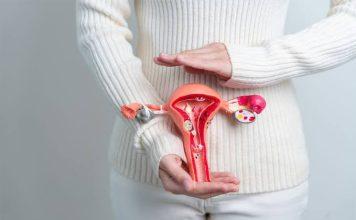Health professionals specializing in maternal care recommend that women who suffer from regular pain and heavy bleeding during menstruation should be evaluated for adenomyosis.
They state that while endometriosis and adenomyosis can coexist in a woman and share similarities, they are distinct conditions. Many women mistakenly believe they have fibroids when they are actually dealing with adenomyosis.
The experts emphasize that even though adenomyosis and fibroids share symptoms like heavy menstrual bleeding and fertility issues, they are medically different conditions. They advise women to promptly seek medical attention if they experience symptoms like intense menstrual bleeding, severe cramps, or painful intercourse.
Adenomyosis develops when the tissue lining the uterus expands into the muscular uterine wall, as outlined by the Mayo Clinic.
According to the clinic, the displaced tissue in adenomyosis will continue to function normally, thickening, breaking down, and bleeding during menstrual cycles, causing heavy and painful periods.
Gynecologists emphasized that adenomyosis significantly impacts the quality of life of women managing the condition due to the chronic pain they endure on a regular basis. They mentioned that MRI is an effective tool for diagnosing adenomyosis, and its precise cause remains unknown.
The medical experts reassured that treatment options are available for adenomyosis, with High-Intensity Focused Ultrasound (HIFU) being a non-invasive method to alleviate the persistent pain experienced by women with the condition.
Dr. Abayomi Ajayi, a fertility expert and consultant gynecologist, highlighted the lack of awareness among women and medical professionals regarding adenomyosis, despite advancements in diagnostic technology. He stressed the importance of managing pain associated with adenomyosis, noting its impact on a woman’s quality of life.
Although adenomyosis is not life-threatening, it can cause significant discomfort and potentially lead to complications if left untreated. The gynecologists mentioned that the condition is more prevalent in women who have given birth, but it can also affect those who have not been pregnant.
While precise statistics on the prevalence of adenomyosis are limited, fertility clinics are seeing an increasing number of cases, with implications for fertility and the success of in vitro fertilization (IVF).
Ajayi said, “Adenomyosis is a uterine disorder where the cells that normally form a lining inside the uterus, also grow in the muscle wall of the uterus.
“It is a condition that causes the uterus to thicken and enlarge. It occurs when the endometrial tissue grows into the outer muscular walls of the uterus, causing the uterus to enlarge in size and leading to abnormal uterine bleeding and painful periods.
“The displaced tissue continues to act normally every month which means thickening, breaking down, and bleeding during each menstrual cycle. This eventually causes the related symptoms and makes the uterine walls grow thicker.
“It is necessary to be aware that adenomyosis and endometriosis are different. Both are disorders that involve the endometrial tissue and both conditions can be painful.”
The fertility specialist pointed out that Adenomyosis is more likely to result in heavy menstrual bleeding compared to endometriosis.
“The endometrial tissue grows into the muscle of the uterus in adenomyosis, while for endometriosis, it grows outside the uterus and may involve the ovaries, fallopian tubes, pelvic side walls, or bowel. You should consult your doctor if you suspect either adenomyosis or endometriosis.
“The true cause of adenomyosis remains unknown. But it is established that its growth depends on estrogen which is why it is seen in women in their reproductive years.
“The main symptom is mild to severe pain, but you may not experience pain at all. Other symptoms may include prolonged menstrual cramps, heavy menstrual bleeding, or pain during sexual intercourse”, he stated
Ajayi discussed the benefits of using High-Intensity Focused Ultrasound (HIFU) as a non-surgical approach for treating adenomyosis.
Additionally, he mentioned that hormonal medications could also be effective in managing the condition.
It was emphasized that caution should be taken when using hormonal medications, especially for women who are trying to conceive, as they may impact ovulation.
Ajayi advised women to consult with their healthcare provider to explore various treatment options and alleviate symptoms associated with adenomyosis.
The 2019 study published in the PubMed Central journal titled , “Recent advances in understanding and managing adenomyosis”,
According to the researchers, in the past ten years, adenomyosis has been detected in younger, fertile women, which they credit to advancements in imaging methods.
The PMC journal, a publication in the field of biomedical and life sciences hosted by the U.S. National Institutes of Health’s National Library of Medicine, focuses on scientific literature.
Yet, the researchers noted that there is still a lack of awareness regarding the condition even with advancements in diagnostic technologies.
“The development of imaging techniques, such as MRI and transvaginal ultrasonography (TVUS), has allowed clinicians to make a non-invasive diagnosis of adenomyosis in women”, the researchers stated.
